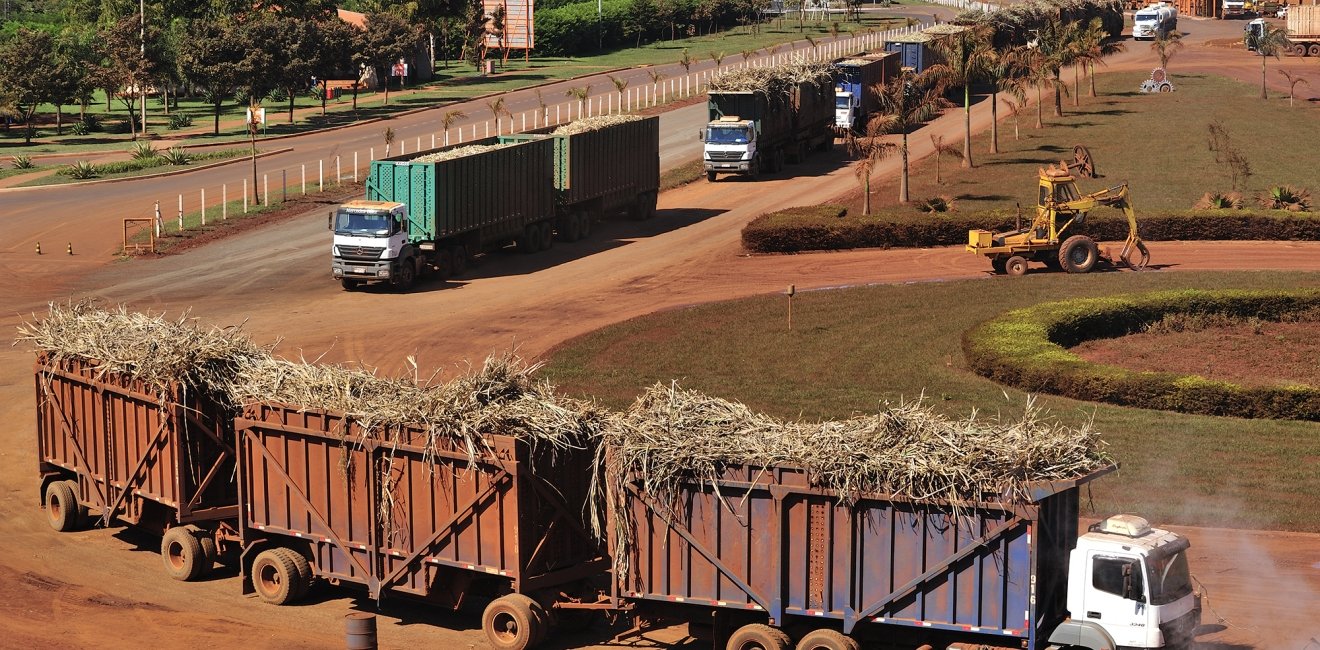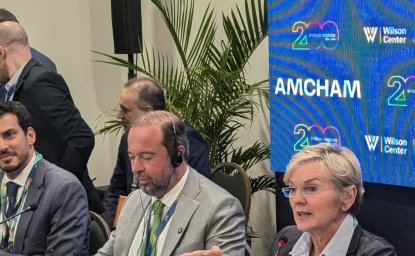
A blog of the Brazil Institute
Brazil is the largest sugarcane producer on the planet, being home to 40 percent of the world's crops. And in Brazilian plants, the same feedstocks used to make sugar and ethanol—fueling almost one-half of the country's entire fleet of automobiles and motorcycles—also supply enough electricity to power 12 million homes.
This energy is deemed as renewable—as it is made using sugarcane bagasse, a leftover fibrous plant matter—and clean, owing to its low-pollution production process using gas scrubbers. Every ton of sugarcane used to make sugar and ethanol generates an average of 250 kilograms of bagasse and 200 kilograms of straw. Rich in fiber, these byproducts are burned to generate electricity.
Indeed, bagasse has been used to supply vapor and electricity for sugar and ethanol production since the industrial revolution, ensuring the self-sufficiency of ethanol plants during harvest periods.
However, beyond providing energy for industrial production, bagasse has been used to generate surplus electricity since the 1980s, which is then supplied to the Brazilian national power grid.
During the sugarcane harvest, the country’s 360 plants become energy self-sufficient. Of these, 194 produce surplus electricity that is sent to the national grid. Over 22,600 GWh of electricity was produced in this manner in 2020 (enough to power 775,000 houses in the United States for one year), a 1-percent increase compared to 2019.
Biomass sources represent 9 percent of Brazil's energy mix, behind hydroelectric, thermoelectric, and wind power. Therefore, sugarcane reduces the country's carbon dioxide emissions by 7 million tons a year—the equivalent of planting 49 million native trees over the course of 20 years, according to the Sugarcane Industry Union (Unica).
Ethanol Plant Ensures Self-sufficiency and Profits
One such plant that generates electricity using sugarcane is located in the interior of the center-west state of Goiás—Brazil's second largest producer of sugarcane and its derivatives, behind only São Paulo.
The Cooper-Rubi plant began producing electricity in 2020 and now it powers the entire facility during the harvest period, in addition to exporting energy to the national grid. During last year's harvest, Cooper-Rubi exported a total of 24,000 MWh, generating an average of 16 MWh every hour.
The electricity generated using sugarcane bagasse powers all activities at the plant, from industrial areas and irrigation to the company's administrative headquarters. Cooper-Rubi's energy bills plummeted, reaching zero consumption during the harvest period.
“After the national energy crisis [at the beginning of the 2010s] the cogeneration of electricity from sugarcane biomass became well known and an excellent alternative, besides being a clean and renewable energy source," says Adalberto Souza, an electrical engineer at Cooper-Rubi.
Cogeneration occurs during the dry season, when the levels of water reservoirs are lower and electricity becomes more expensive. By generating energy from the byproducts of ethanol production, not only do companies become self-sufficient, but it also increases the supply of electricity for the population as a whole, potentially reducing costs for final consumers.
Like the content? Subscribe to the Brazilian Report using the discount code BRAZIL21 to get 20 percent off any annual plan.

Author

Brazil Institute
The Brazil Institute—the only country-specific policy institution focused on Brazil in Washington—aims to deepen understanding of Brazil’s complex landscape and strengthen relations between Brazilian and US institutions across all sectors. Read more

Explore More in Brazil Builds
Browse Brazil Builds
They're Still Here: Brazil's unfinished reckoning with military impunity




